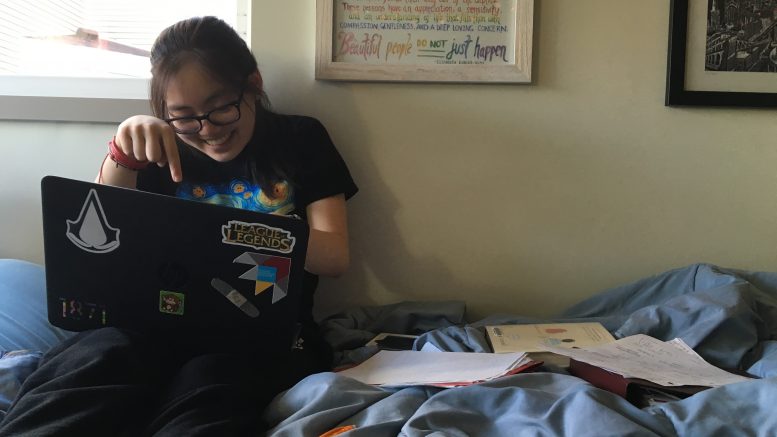Now that it’s mid-November, IMSA students have already struggled through dozens of writing assignments, from first day get-to-know-you blurbs to mind-numbing American Studies research papers. While I don’t mind these assignments, I have witnessed the spike they cause in student stress levels.
Although starting this process the night before is NOT recommended, here is a little formula you can use to hash out how to conquer the writing beast. Even if you claim to have never written anything good in your life and find yourself stuck in the eternal rut of writer’s block, this method may give you that all-important first push.
BRAINSTORMING AND STRUCTURE: to have an idea of what you’re going to write.
Questions you should ask before this process –
What is my goal? (how many pages? what’s my topic? what am I being asked to convey?)
This should be in the prompt/assignment your teacher gave you. Having a clear goal is crucial to writing anything close to being relevant and good-quality.
What are the expectations?
If there is a rubric, base this off that. If there is not one, use your best judgement, upperclassmen’s advice, how your teacher has graded in the past, and specifications about the assignment found in the prompt.
What do I know about the topic?
If you don’t know much or anything at all, research, ask friends, reread notes, or actually do the reading. Understanding what it is you are writing about might seem to be trivial and easily avoidable by ‘talking around’ the actual topic. But teachers can tell when you have no clue about your topic. This saves you from making any embarrassing assumptions that were clearly covered in the reading or lecture.
What points do I need to cover?
- Write a thesis (or whatever general idea you are promoting in the rest of your writing).
This is not listing “This is my argument because of A, B, and C” (A, B, and C being the body paragraphs). This can be more general. A blanket statement, if you will. - Take some of the most important and standalone ideas from your organized list (again, the thesis is NOT a list of things you will talk about) and make them your body paragraphs.
- Using bullets or indents, gather and list whatever supporting evidence you have for those body paragraphs underneath the general points you made in the previous step.
STARTING THE ACTUAL WRITING:
Fill out the broadest statements in your work
Thesis, topic sentences, concluding sentences. These three are the skeleton of your paper. If these are weak, your argument will be unclear and unstable. Spend a reasonable amount of time focusing on these. Get a killer thesis that directly speaks to the point you are trying to make. Once you have a thesis, work out the topic sentences for each paragraph that build off of that thesis; try to make your entire essay coherent and smooth, using these topic sentences as your guide.
Build off of your statements. Work on the sentences showing supporting evidence.
Don’t worry about order yet. Although each paragraph should not be independent from the rest of the essay, the focus each paragraph has should be distinct enough to work on without going in order.
Make sure everything connects to the thesis, your broadest statement.
No matter how ‘bad’ of a writer you are, if you show how each point you make relates to and supports your claim clearly, your argument will be much more sound.
Even if you have “writer’s block,” you can still write something by working out logical reasons for why your evidence supports your claim. Although I do not recommend you make the terrible, terrible mistake of starting an essay at 12 a.m. the night before it is due, I hope this does give you some useful tips of writing any kind of essay, even if you have a case of writer’s block and a fast-approaching deadline.






Be the first to comment on "How To IMSA: Writing Essays"